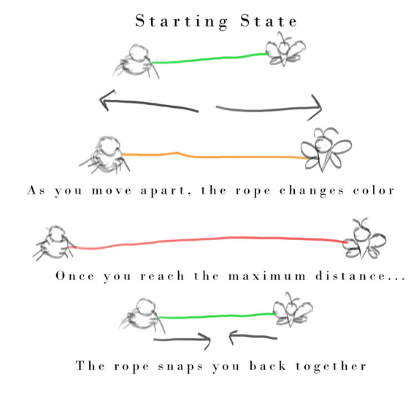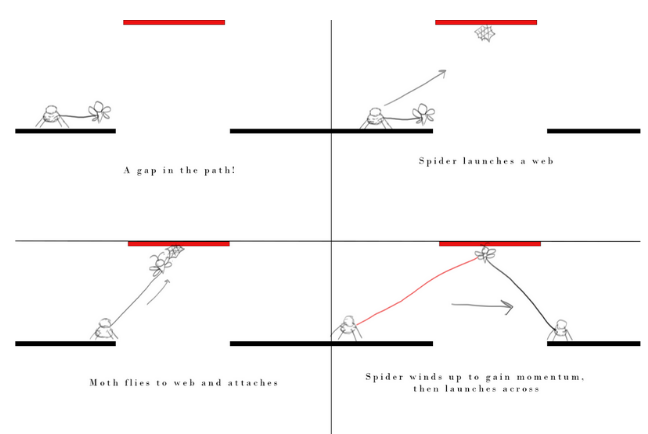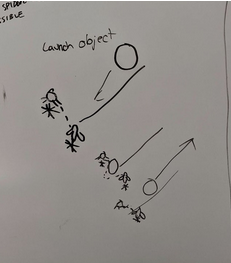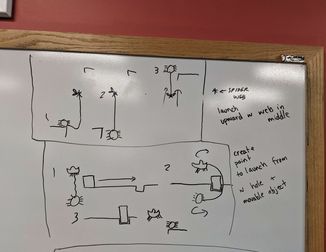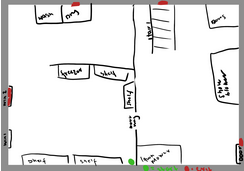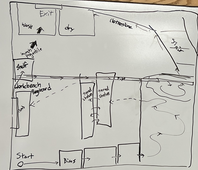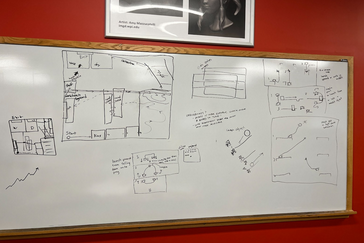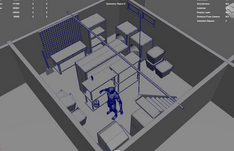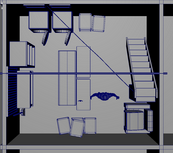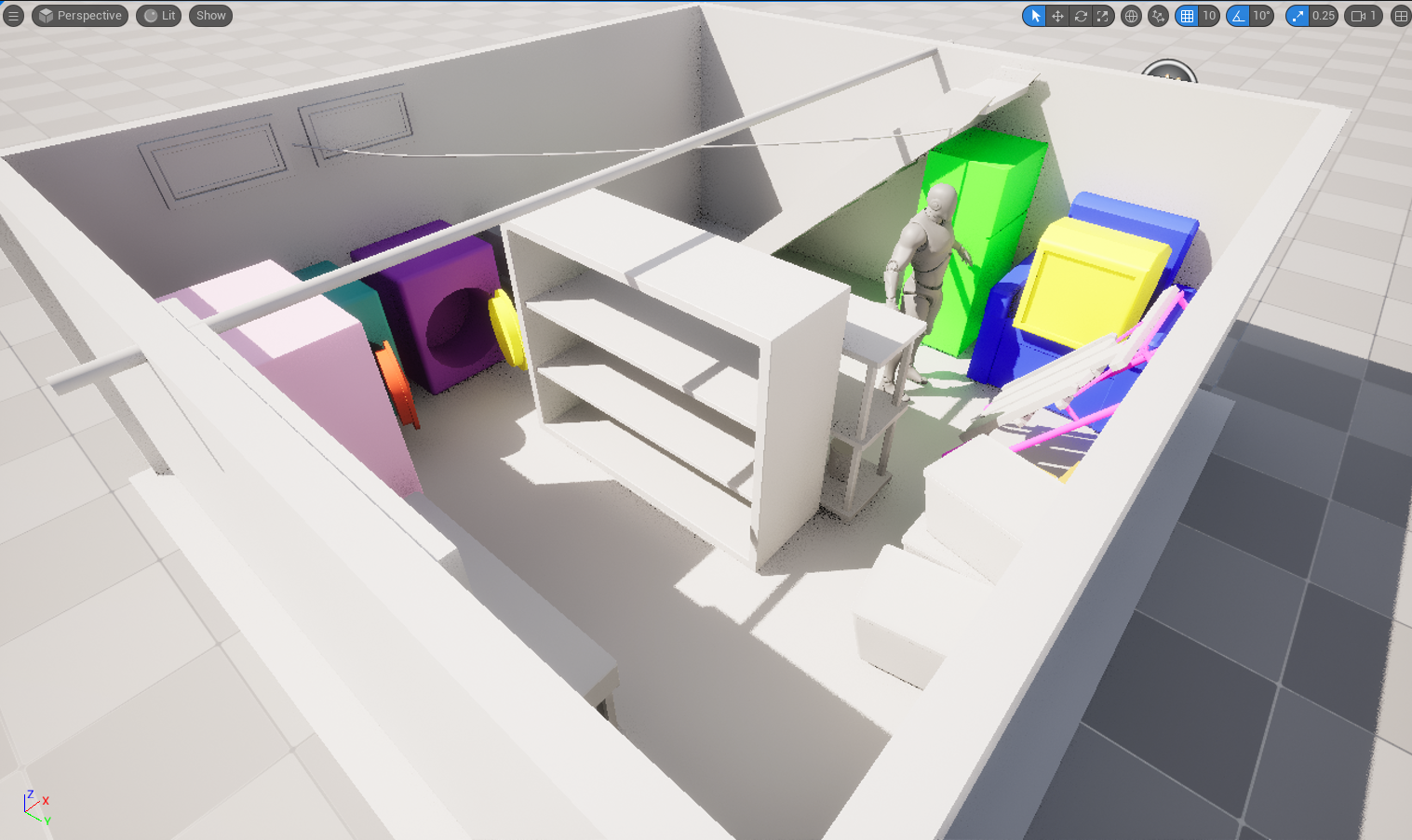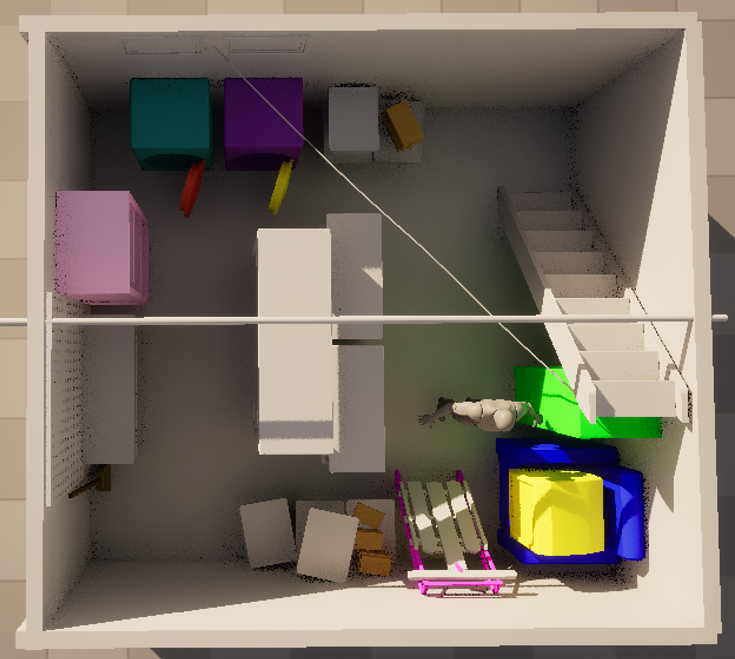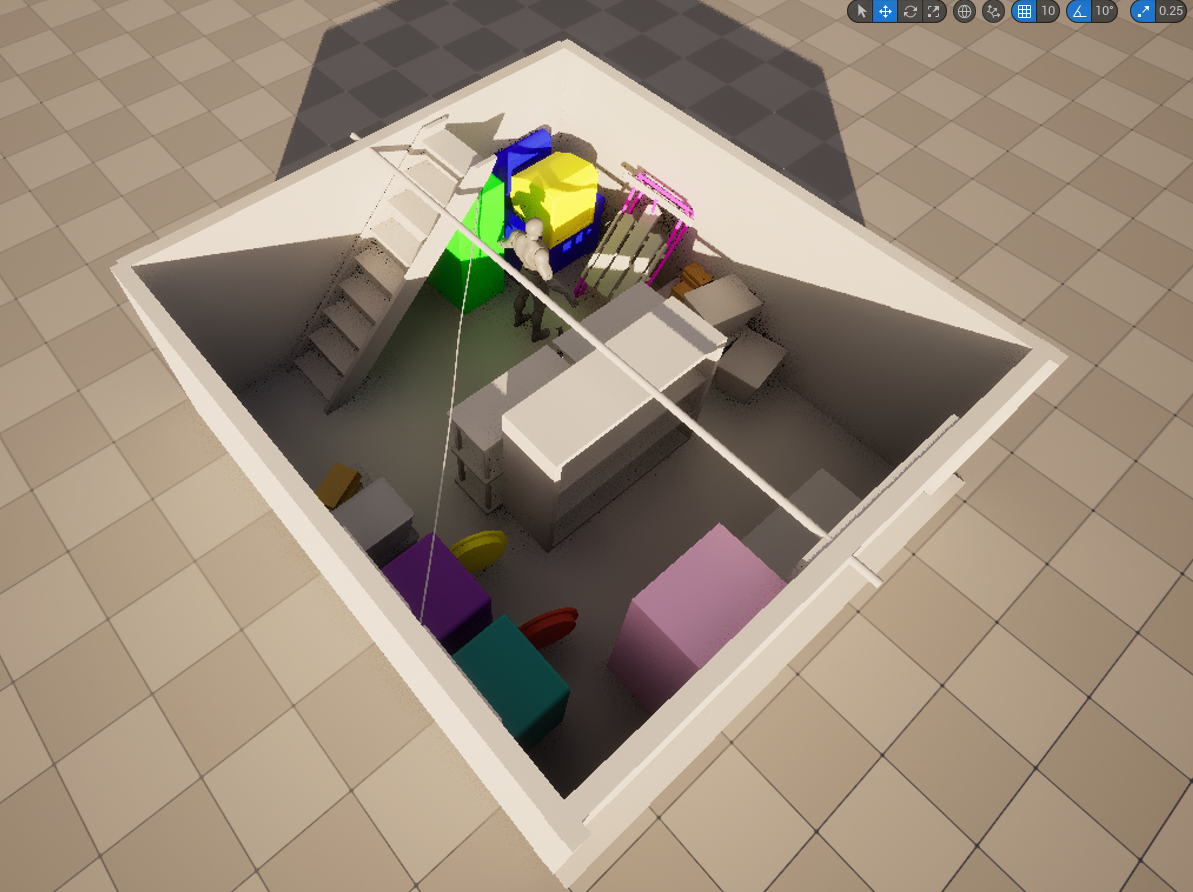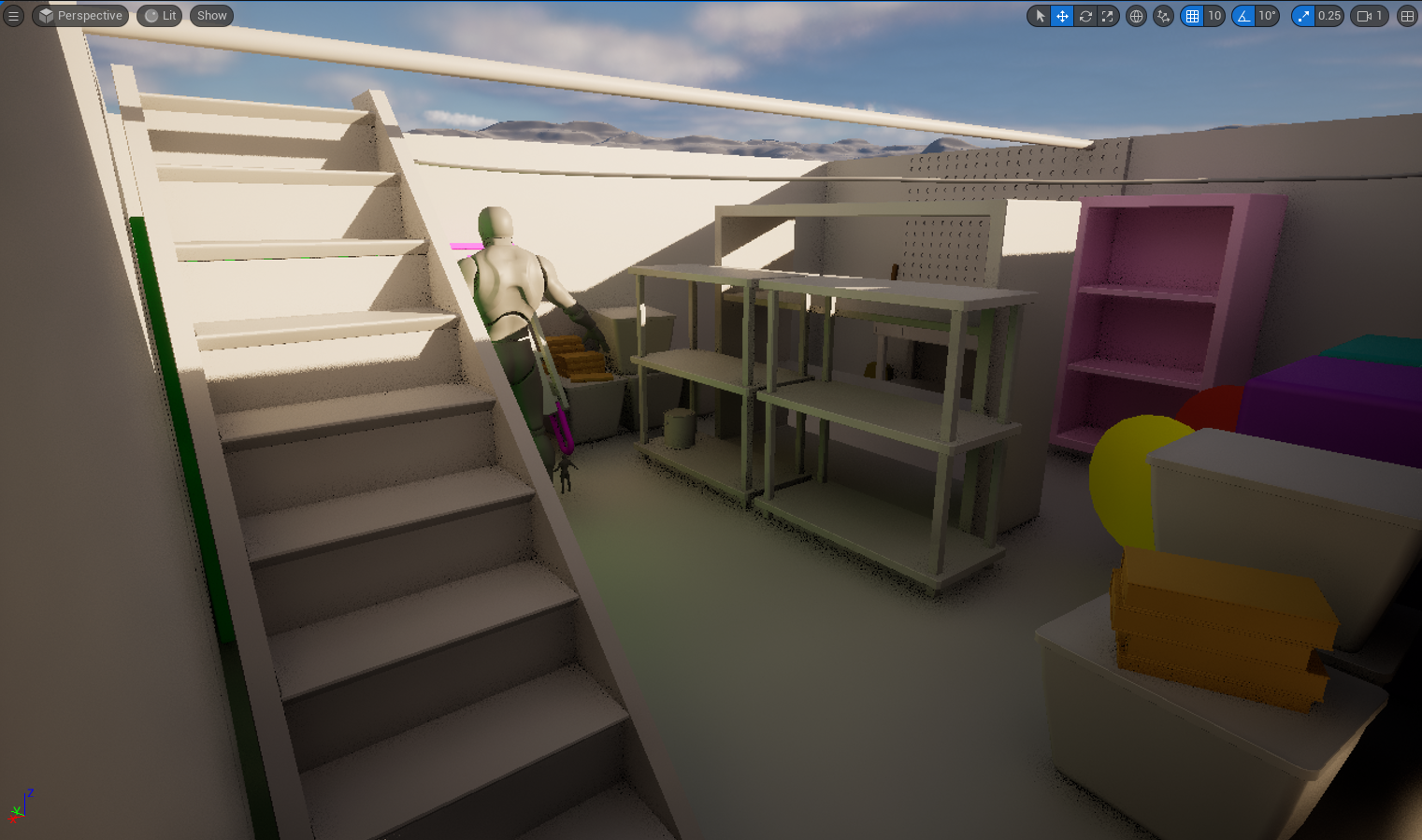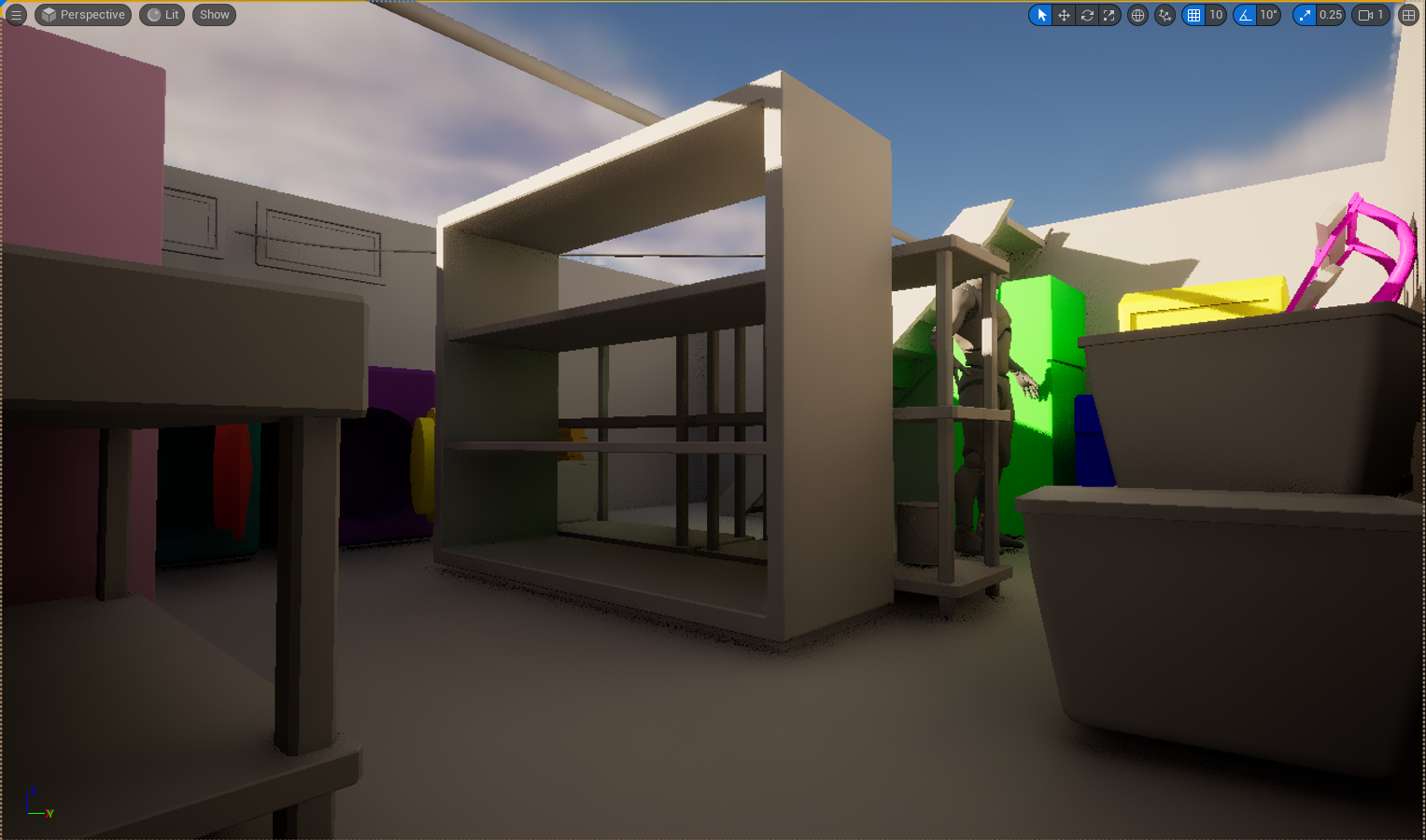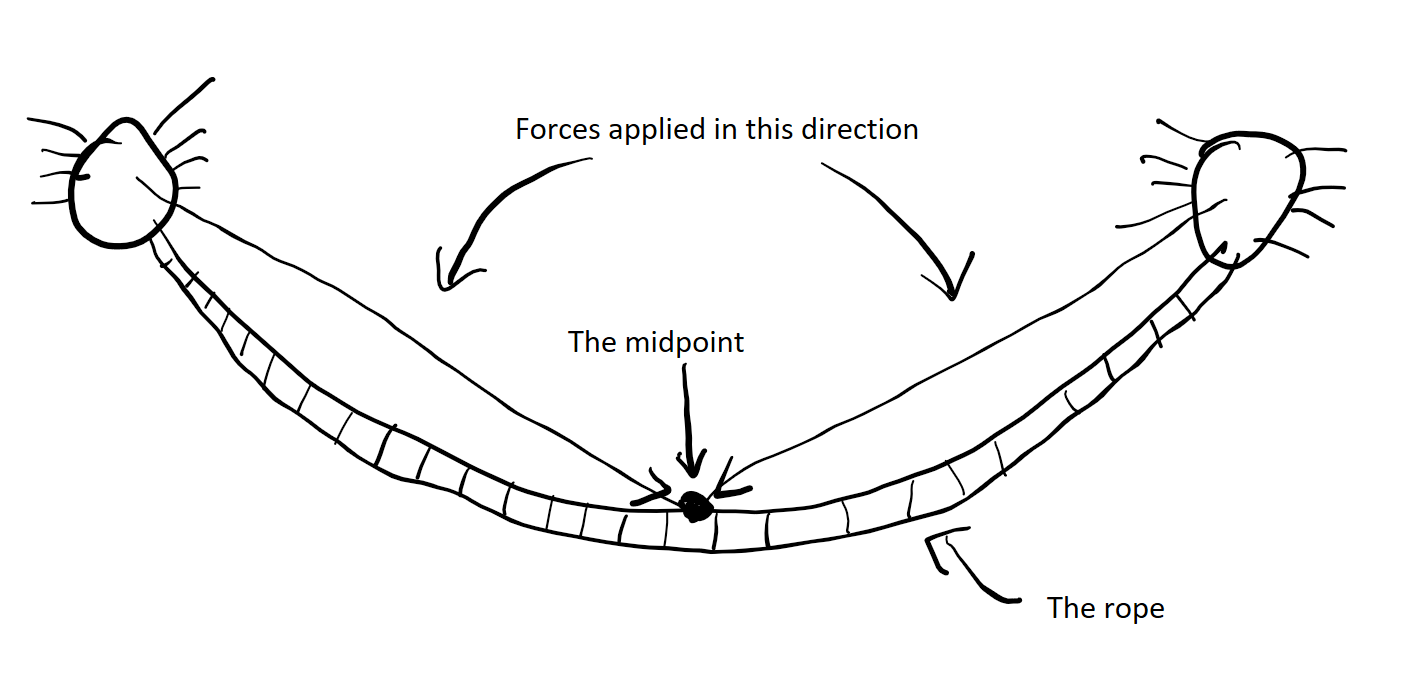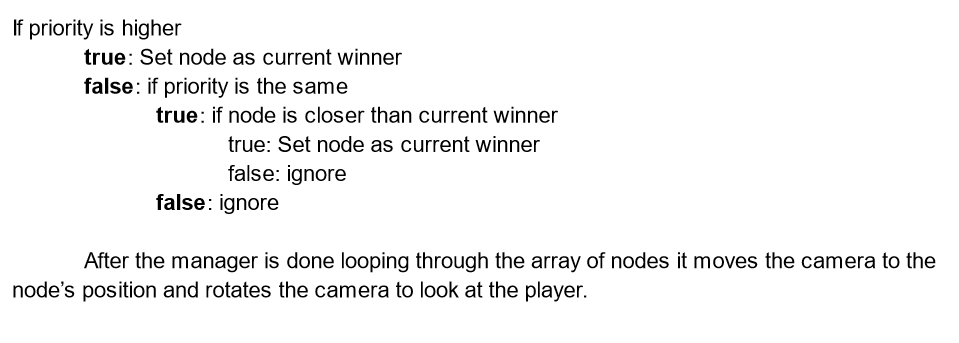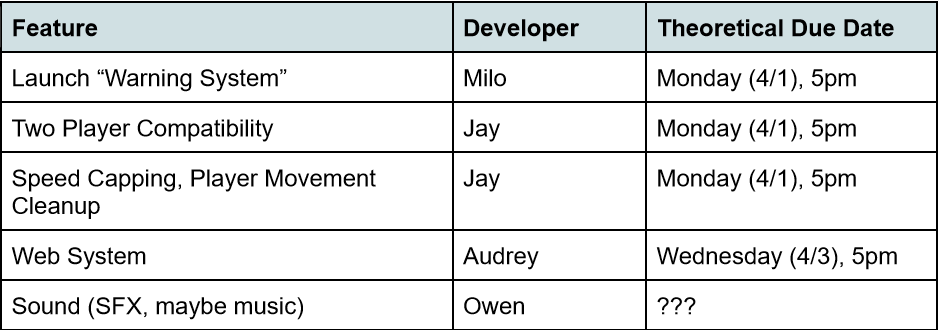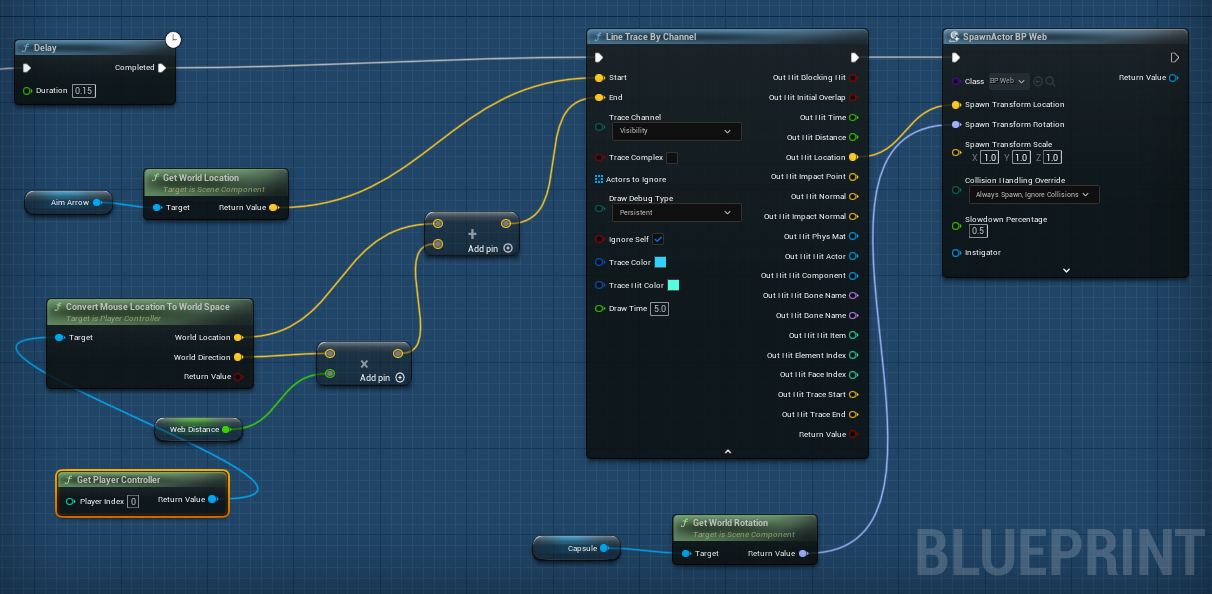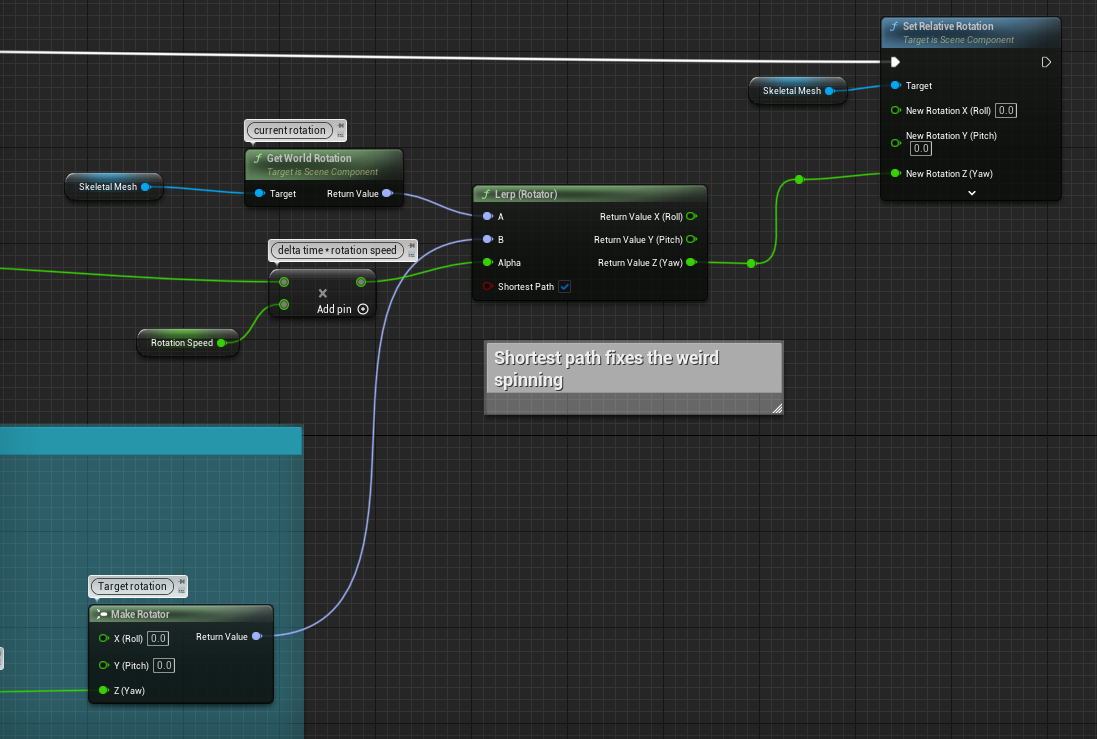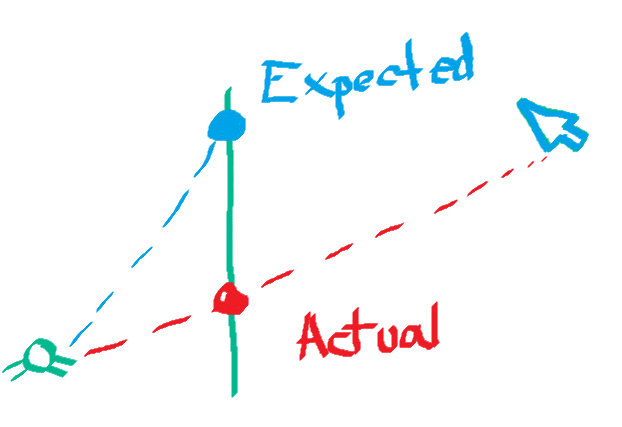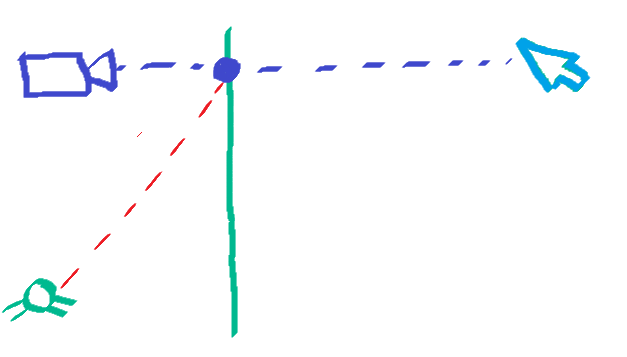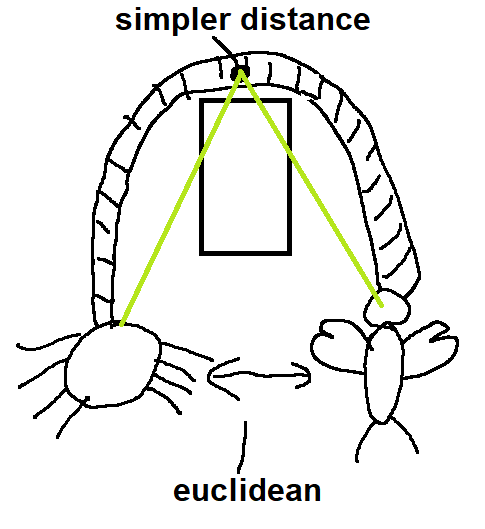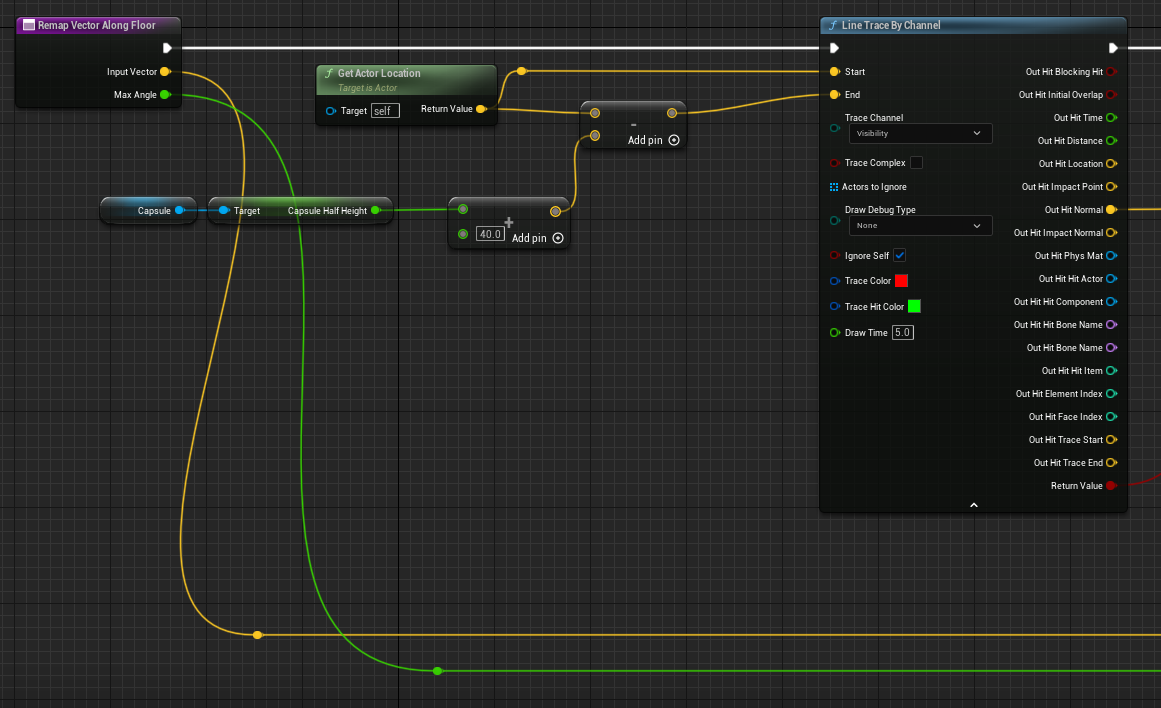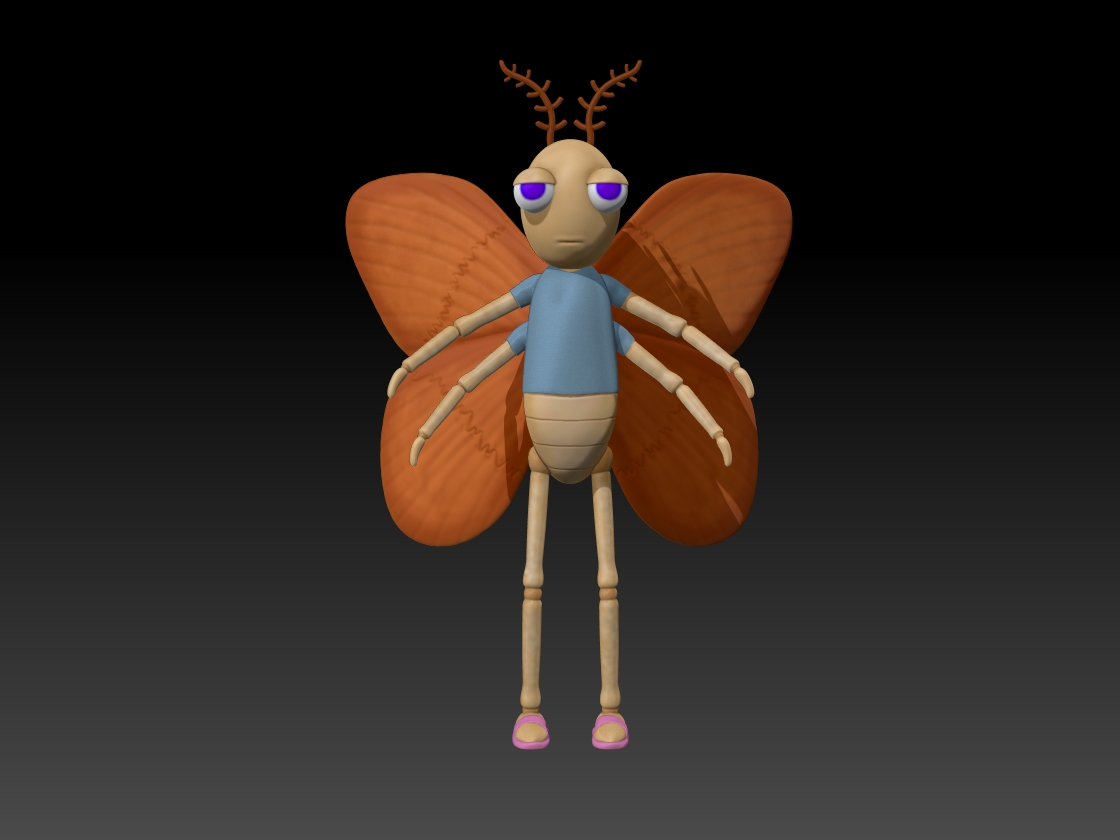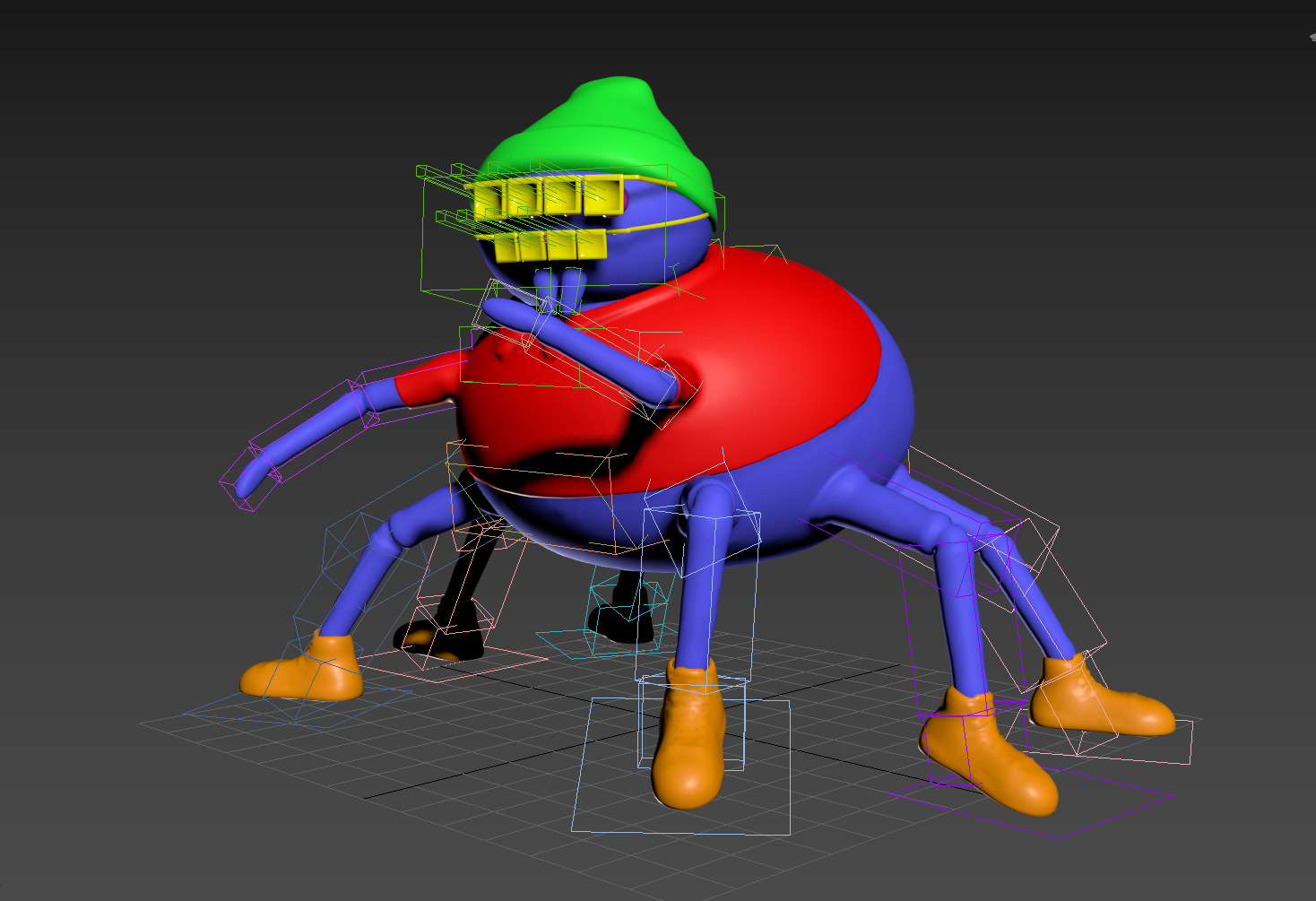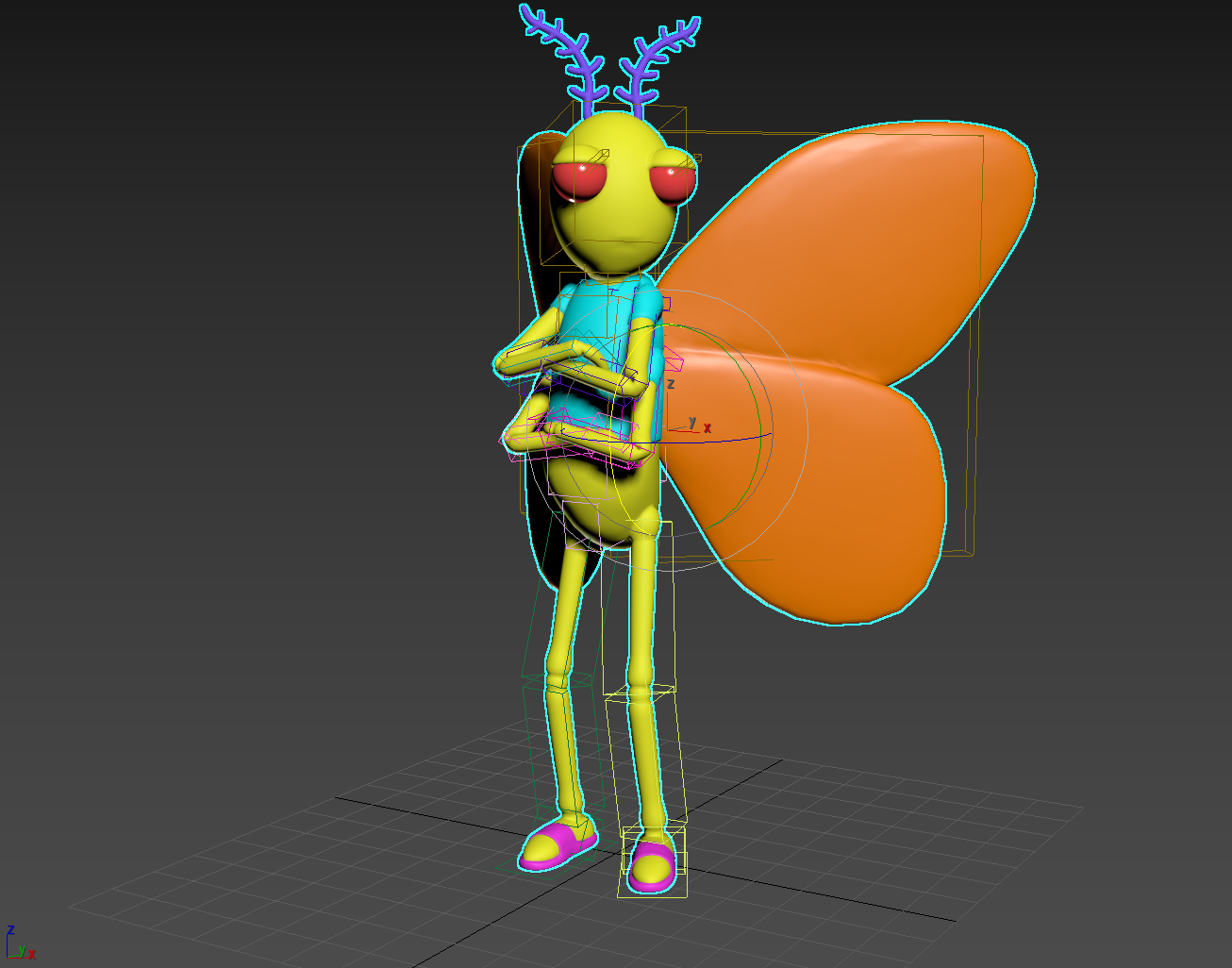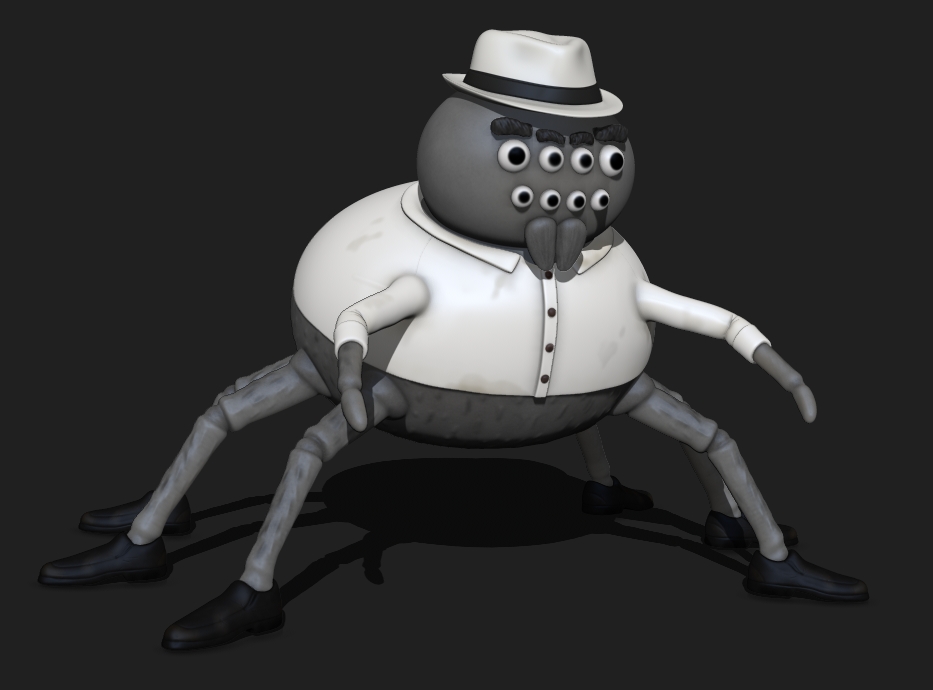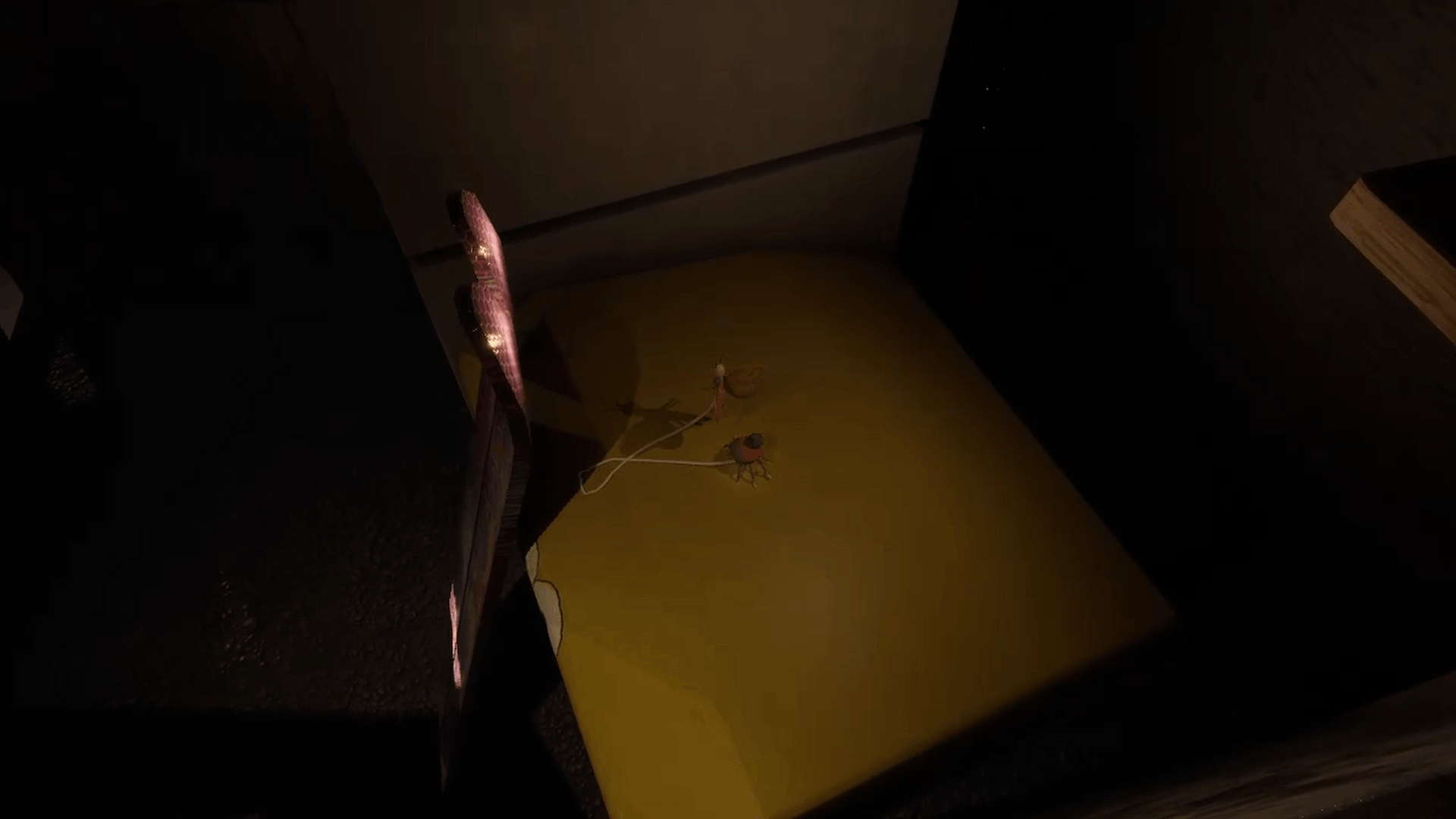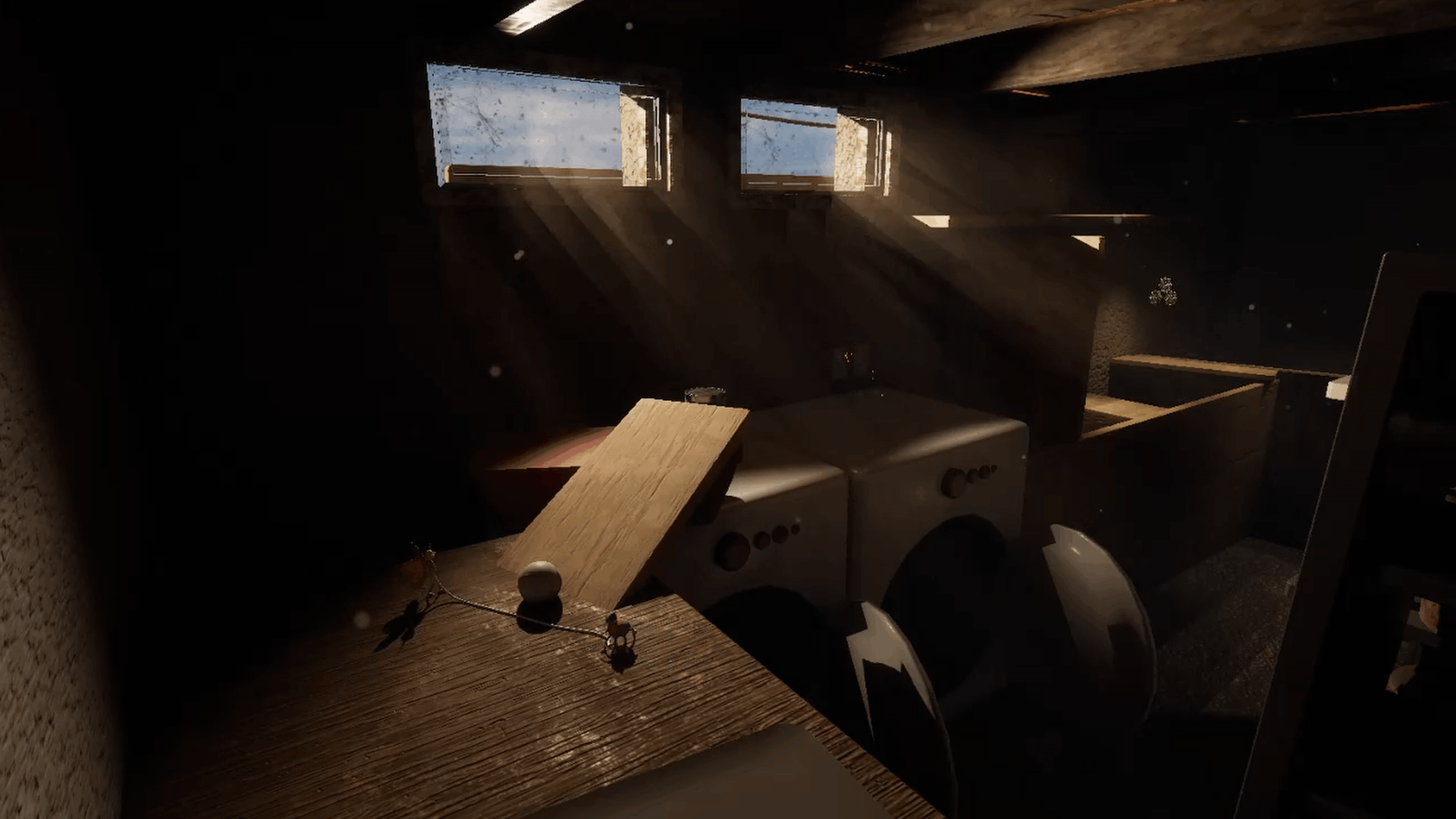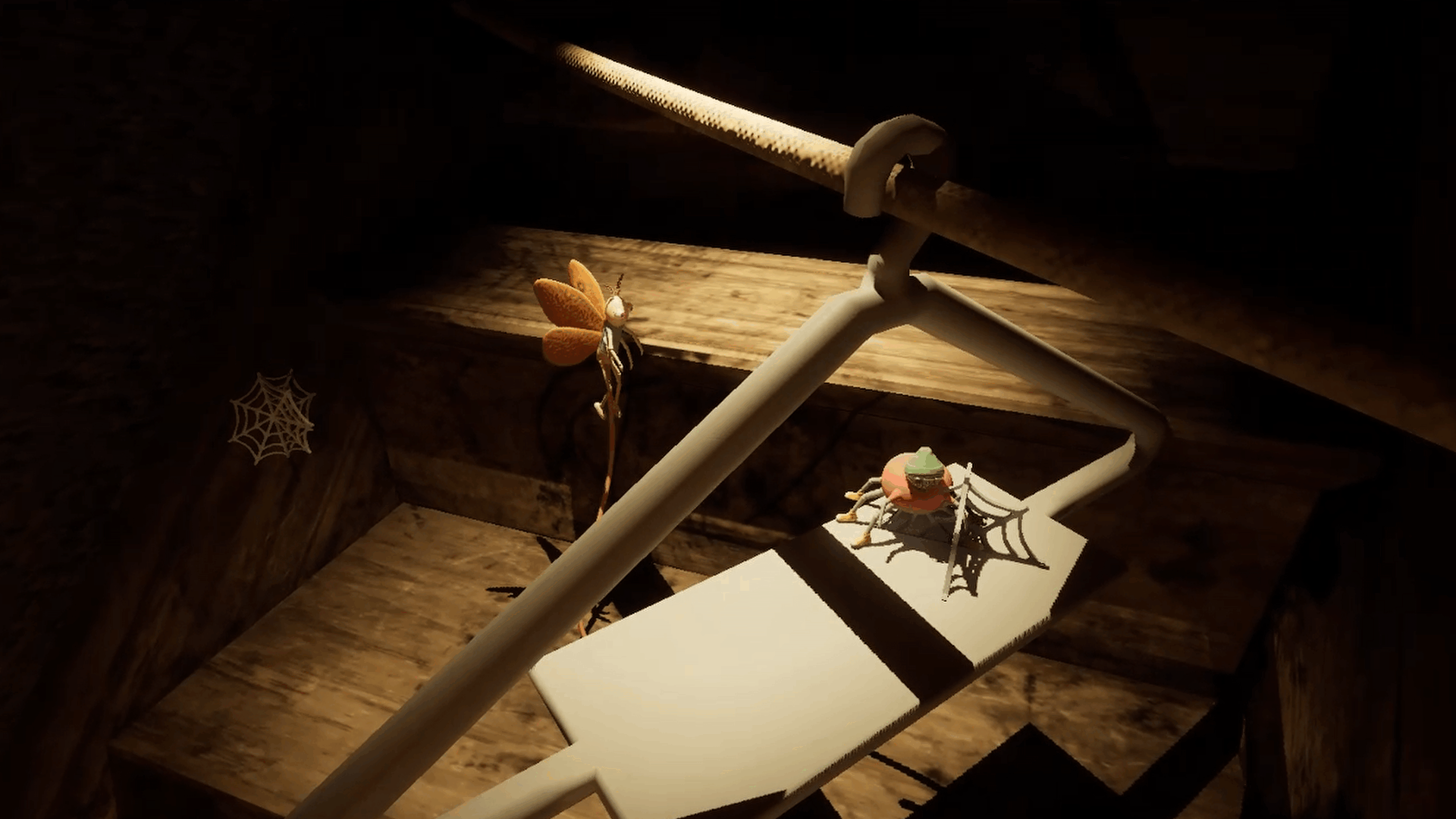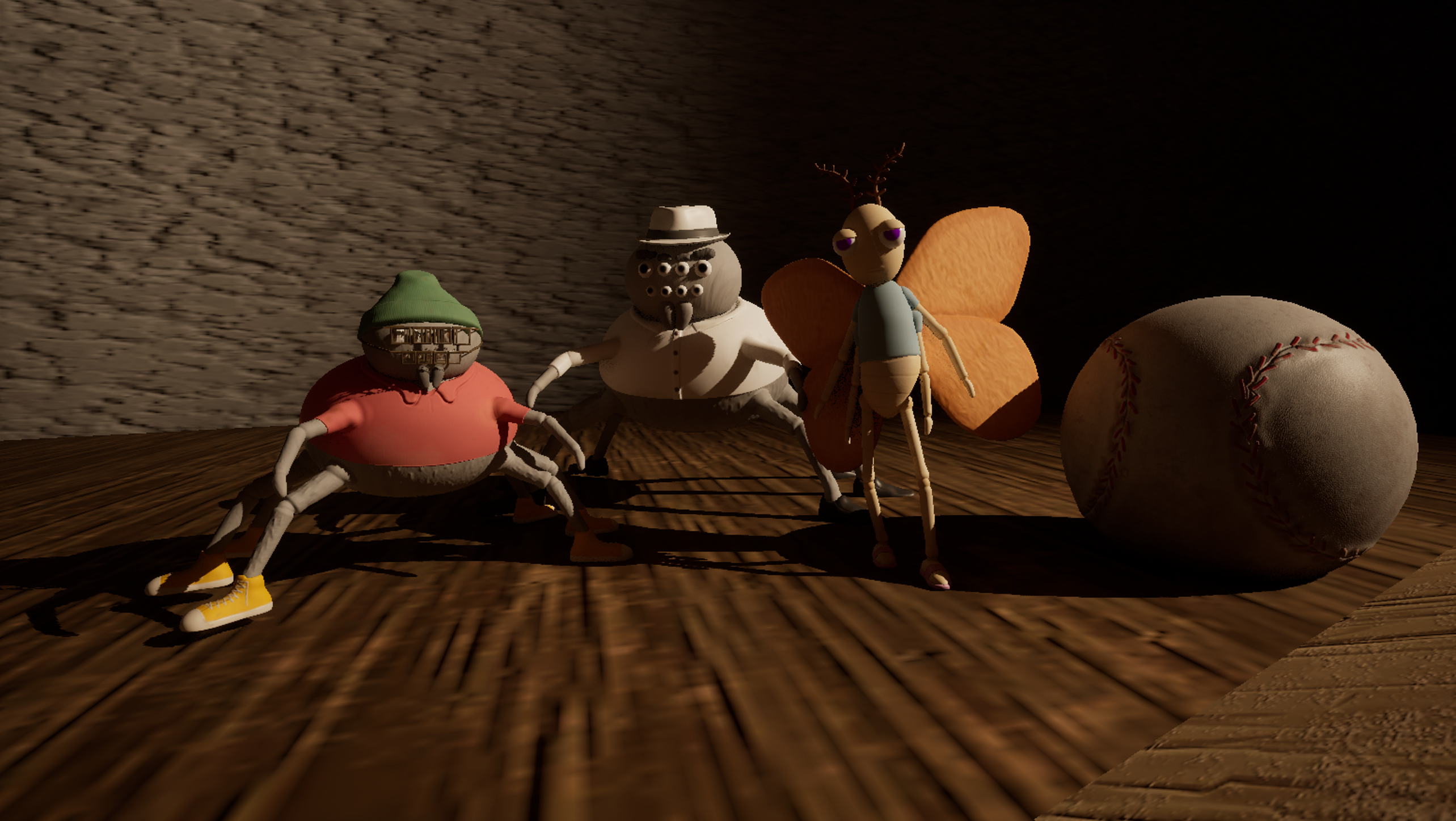Tech Work
Splines
When beginning to test exporting our project, we realized that our current method of viewing Giovani's web shooting trajectory was debug-only. We were using visible line traces, which don't show up in exported builds.
For the alpha build of the game, we found it necessary for the player to be able to see where they were shooting, since the aiming functionality is still wonky, and dependent on the camera angle relative to the players (we do, however, have an idea on how to improve it, which we will implement next week). When investigating options for a visible aiming trajectory, we learned that Unreal has no built-in functions for easily drawing lines in 3D space (except for debug line traces). Instead, we decided to use a spline which is “connected” to the player and the hit location of the original line trace.
The spline isn't just a default Unreal spline object, but an actor that contains a spline so that it can handle its own movement and meshes. Splines are only visible if they have a mesh attached to them, which was the hardest part of the implementation; We needed a mesh that would look good when stretched, since it is unnecessarily complex to update the amount of spline points (and, more importantly, spline meshes) every tick. We opted with using a basic cylinder as the mesh, and adding a “laser pointer” material to avoid the problem of the material's stretch impacting the visuals.
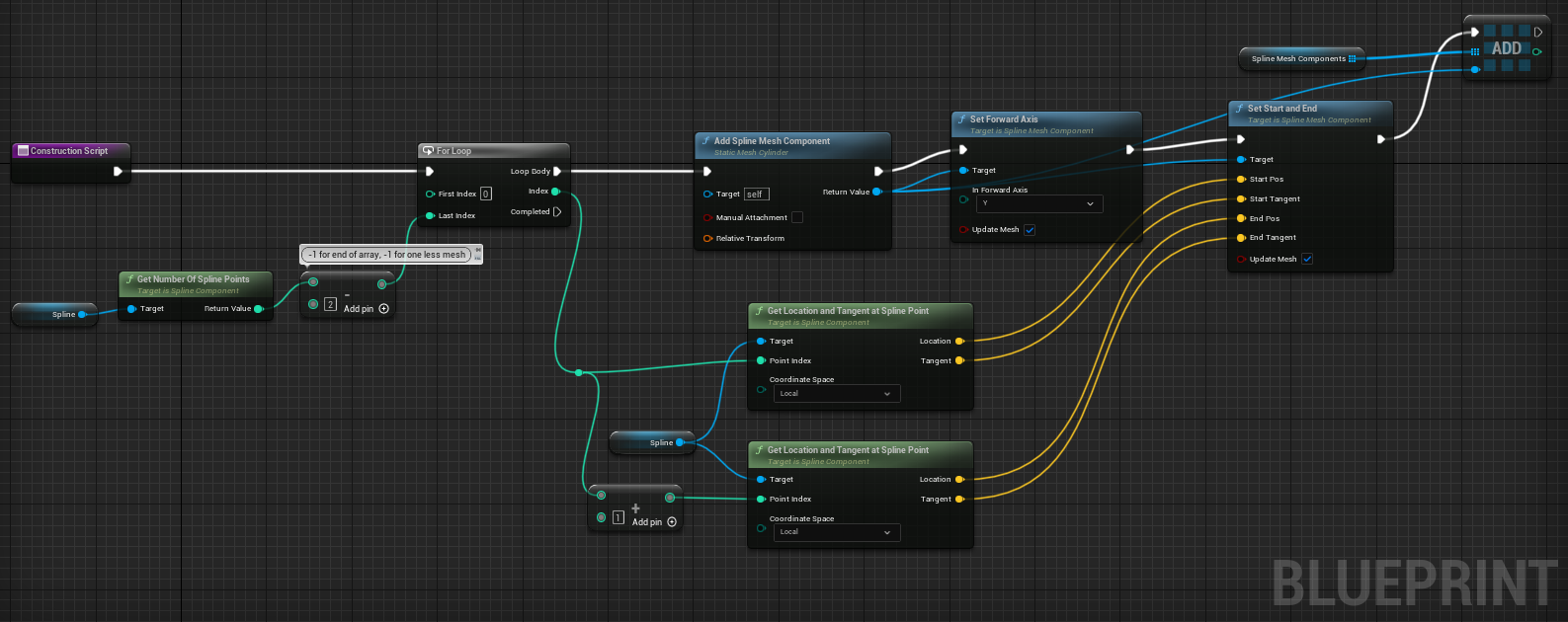
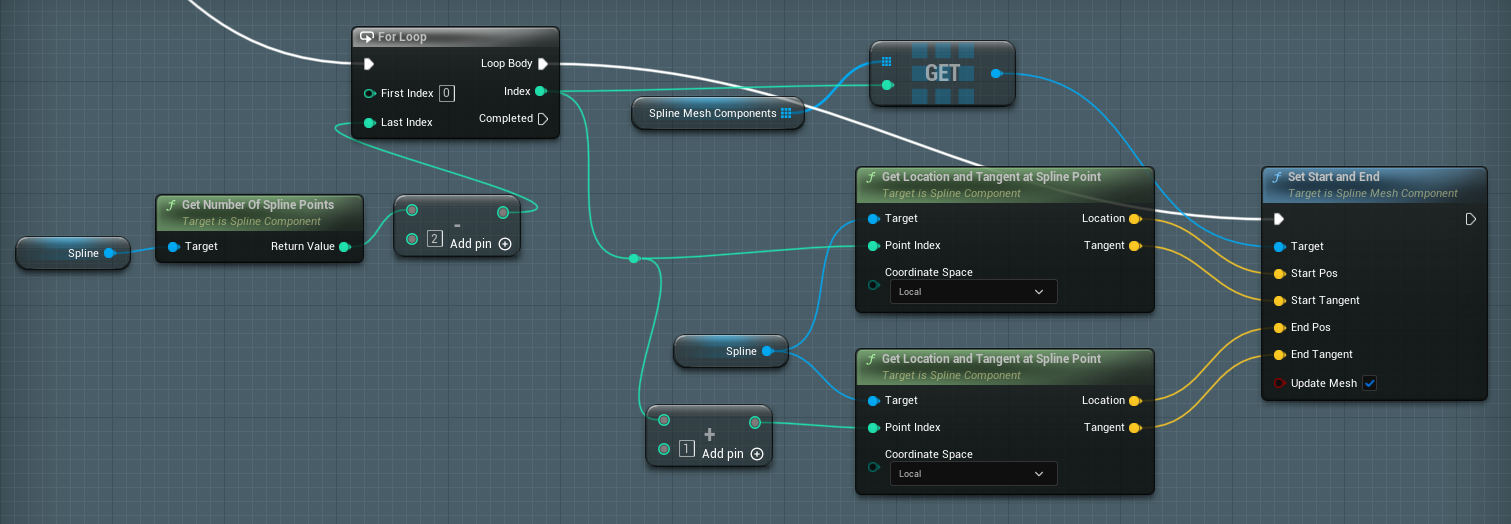
If we have time in the future, we may decide to make the trajectory an arc by adding a point which will always remain at the midpoint of the other two, while raised up above them (from a 2D perspective). We also plan on changing the spline's material; we like the laser pointer, but if we decide to keep it, we will tone it down a bit (decrease the brightness and/or the amount of light it puts out). We may also change it to be a dotted line, ditching the laser pointer material entirely.
We also decided to make a slight modification to the spider webs to make their condition more obvious to the player. Now, when there is a player stuck in a web, the web changes color from white to green.
Aiming Changes and Aim Line Material
In the alpha build, when determining where to shoot the webs, a line is drawn between the spider player and the 3D cursor. The problem is that the 3D cursor is very far away in the 3D space, and as a result of this the line is intercepted by the wall at a much lower elevation than we are intending.
The spider is unable to shoot the web to many of the intended locations because it cannot aim very high upwards.
The solution we discovered was first to draw a line trace between the camera and the 3D cursor and get the point where the line hits a wall. We then draw a line trace from the spider character to the intersection point of the previous line trace. By doing this there is less distance between the spider and the target position so it is able to reach the full intended elevation.
We ran into an issue where the line trace was barely not long enough to reach the wall due to minor losses in accuracy. To fix this we just had to make the line trace go a bit further than the target destination.
With the new system in place the web aiming is finally able to reach the proper intended height!
Another addition we made was to have the GFX of the aim line be dotted.
The way we did this was by creating a new Material, setting its Blend Mode to mask, then plugging in a Black & White striped texture to the Opacity Mask node.
Solving Export Issues
Rope Length Calculation
At the end of last week, we had two main export issues. First, the rope wasn't reaching the length threshold needed to launch on higher-end machines. On lower-end machines, it would reach the length threshold too easily! This is likely due to different physics framerates. Technically, any deviation from the rope's length is a slight violation of the physics constraints, so the better a machine is, the shorter the rope will remain, and vice versa. We at first fixed this on higher-end machines by setting the rope length thresholds lower, but that made the problems on lower-end machines worse. In the end, we fixed the problem by throwing out the rope length calculation entirely, instead simply using the distance between the two characters. We expected this would lead to some unintuitive results; therefore, we at first planned to only enable this setting on lower-end machines. But we found that the result was pretty much indistinguishable!
The only time the new system would make a difference is a situation like below.
But in this case, the simpler solution would be to use just one bone in the middle to mitigate the inconsistent effects of the constraints.
This is a lesson in not over-engineering problems. If you come up with a dead-stupid solution that might just work well enough, go for it! You can always make the more complicated one later.
Rope Launching
On lower-end machines (specifically Milo's laptop with integrated graphics), the rope had another issue: it kinda freaked out when characters got far enough apart, launching characters with incredible force and then breaking. We mitigated some of this by removing the linear motor on the rope, but it still wasn't perfect. Here's how it works now:
The rope will often go far beyond what its constraints allow, which leads to weird behavior. There's also much more clipping, not just of the rope but of all physics objects. For now, we've done all we can to mitigate these issues, so we mostly just recommend playing the game on a computer with a dedicated GPU.
Moth Jumping
Fixing the moth jumping was done by using impulses rather than forces. This was likely also due to the different physics frame rates on different machines. Since a physics tick is much shorter on a higher-end computer, it wouldn't jump nearly as high. We instead used an impulse, which isn't dependent on tick length.
Camera Tweaks
This week the camera system needed a few tweaks to confirm it was working correctly. Different checks were needed to be made on the algorithm to correctly choose a camera. After camera nodes were placed around the level, The camera broke for a short period where it stopped looking at the mid-point of the players. After that was fixed the camera was ready for the Alpha.
Character Controller Tweaks
The character controllers in the alpha build struggled to go up sloped surfaces.This was because even when standing on an angled surface, their movement direction is fully horizontal, and they need some of their speed to be vertical to successfully climb the slope.
We need to align the speed of the character's movement to the angle of the slope. The first step to accomplishing this is to find the Normal of the surface. We can get this by sending a Line Trace downward. The Out Hit Normal vector output is exactly what we want.
We want to be able to limit which surfaces the characters can align to. If the angle is above a certain threshold we don't want to remap the movement direction. To find the angle of the surface, we get the Dot Product of the Up Vector (X=0, Y=0, Z=1) and the Normal Vector we got earlier, and then we put that through the Acosine (Degree) function.
With that, we can decide whether or not to remap the movement vector based off of the angle of the surface.
With the Normal Vector known, we can remap the movement direction using the Project Vector Onto Plane function. We use Out Input Vector as V and the Out Hit Normal vector from the line trace as the Plane Normal. The projection function messes with the length of the vector, so we also normalize the result and multiply by the length of the Input Vector.
Hooking that function into the player controller, it can now successfully go up slopes!
Character Rotation
A mistake we made with the previous version of the Character Rotation and blog post is that we used Set Relative Rotation instead of Set World Rotation. While the feature was in development, Set World Rotation was misbehaving while Set Relative Rotation was working properly. However, the Shortest Path feature of the Rotation Lerp function fixed the issues caused by this function. The Set Relative Rotation function gave us problems with the rope and we have since changed to use Set World Rotation.
Art
The Art team started this week with the two main player character models completed and optimized, with a base texture. Introducing Giovani the spider and Marcelo the moth!
At the beginning of the week the CAT rigs for each character were finalized in 3ds Max and an early walk cycle was started for Giovani. As expected, Giovani's rig was a bit more complicated than Marcelo's, but neither proved to be too finicky.
Also this week, the main 'enemy' character, Giuseppe the spider (father of Giovani) was modeled, optimized and given a base texture, as with the previous characters. Giuseppe is yet to be rigged, as the player characters have priority at this time.
Next Steps
Tech
Now that the character models have been rigged, we need to get animations implemented for the characters; Audrey will be working on this.
We plan to have some interactable objects in the environment that influence the platforming and level design (such as breaking the window with a baseball, and knocking over a shovel to create a path to a new platform); Milo will be working on this.
We also need UI! In addition to menus, we plan to have a simple dialogue system to tell the story of the game; Jay will be working on this.
We need sound effects and music; Owen will be working on this.
We would like to have some VFX, such as dust particles floating through the air, lights flickering, and glass shattering when hit with the baseball; Audrey will be working on this.
There were some previous features we are considering going back and improving.
We have already improved the spider web aiming system to be able to shoot webs higher.
We are considering making changes to the camera system. The current system can be frustrating for players since when cameras switch it also switches the controls of the players; the solution would be to have the camera smoothly move between points so there wouldn't be an instant jarring switch (though this would require a lot of time to implement). This system also requires a lot of time to set up camera views correctly since you need to block off other cameras with invisible walls.
Currently, the only way to play the game is with a single keyboard. We were considering adding support for 2 separate controllers to be able to be used to control the characters, however we have decided not to do this since the spider web aiming system is tied to mouse position and we would need to spend extra resources to remake that system.
While these systems would be nice, they would require a lot of resources to change and might not be worth focusing on for now when we only have a few weeks left.
Art
With all characters modeled and the two player characters rigged, it's going to be all hands on deck to get the fellas animated. Giovani has already proven to be a bit time-consuming (Spider walk cycles are weird!), but we should be able to make up for that by employing mixamo animations for Marcelo, due to his bipedal anatomy. Along with this, the top priority is finishing any last models (a proper web model primarily). From there, we will begin texturing all of the objects and get baseline UI into the game.
